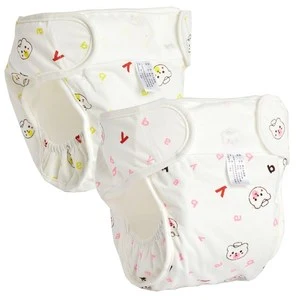As the elastic raw material of sanitary products panty-shape diaper, spandex needs to be tested for its elasticity-related performance indicators, and has certain antibacterial properties and environmental protection requirements. Therefore, the formulation of its detection method needs to fully reflect whether its performance conforms to panty-shape diaper products.
The elastic tightness of panty-shape diaper can be expressed in terms of stretch rate and stretch resilience, which are closely related to the retraction rate when wearing and the shape of the product. Spandex is the elastic material in panty-shape diaper, and its tensile performance index value directly affects the fit and comfort of the product. Tensile performance indicators mainly include breaking strength, elongation at break, fixed elongation load, elastic recovery rate, stretch ratio, etc. The measurement method of elastic recovery rate index is implemented according to the standard of FZ/T5007-2012 "Elasticity Test Method of Spandex Fiber". At present, there is no reference standard for the detection method of elongation index. The recommended detection method is as follows: cut a 5 cm long sample (single), mark the two ends of the sample with 0.5 cm, pinch with fingers, and then stretch to the critical length (that is, when it is about to break, you can refer to the elongation at break value. further extension). A steel ruler can measure the length after stretching. The difference between the stretched length and the sample length and then divided by the sample length is the stretch ratio. The sample length was 4 cm (ie 5-2 x 0.5).

The adhesive properties of panty-shape diaper spandex and non-woven fabrics directly affect the stability of the dress form. Due to the high adhesion between filaments, the existing filament cake has poor unwinding performance, and there are many problems such as broken filaments in subsequent processing processes such as warping and weaving. Manufacturers generally improve this situation by adding antiblocking agents to the polymer, but this will make spandex and nonwovens not bond well, slide easily between nonwovens, and cannot maintain proper form, i.e. The creep resistance of the panty-shape diaper product is not good.
It can be seen that the creep resistance of spandex directly and effectively reflects the bonding performance with non-woven fabrics. There is no corresponding national or industry standard for creep testing. On the basis of summarizing the inspection of similar products and the experience of predecessors, and according to the specific test conditions, the following inspection methods are recommended: at room temperature, fix multiple sample clips on the upper end of the 1.5m high bracket, and hang the replaceable sample clips in parallel next to each sample clip. Graph paper, make sure the sample chuck is aligned with the 0 tick on the graph paper. During the test, a certain length of spandex was fixed in the sample holder. After a certain load is applied, the length is recorded by the corresponding readings suspended in parallel on the graph paper within the specified time interval, and the creep deformation rate is finally obtained. Creep time and load value are the main parameters that affect the creep results.
After the tensile property test and creep property test, although there are still many improvements to be improved, it is not difficult to see that spandex still has a great possibility to be used in panty-shape diaper.
Comment(0)
You can comment after
SIGN IN